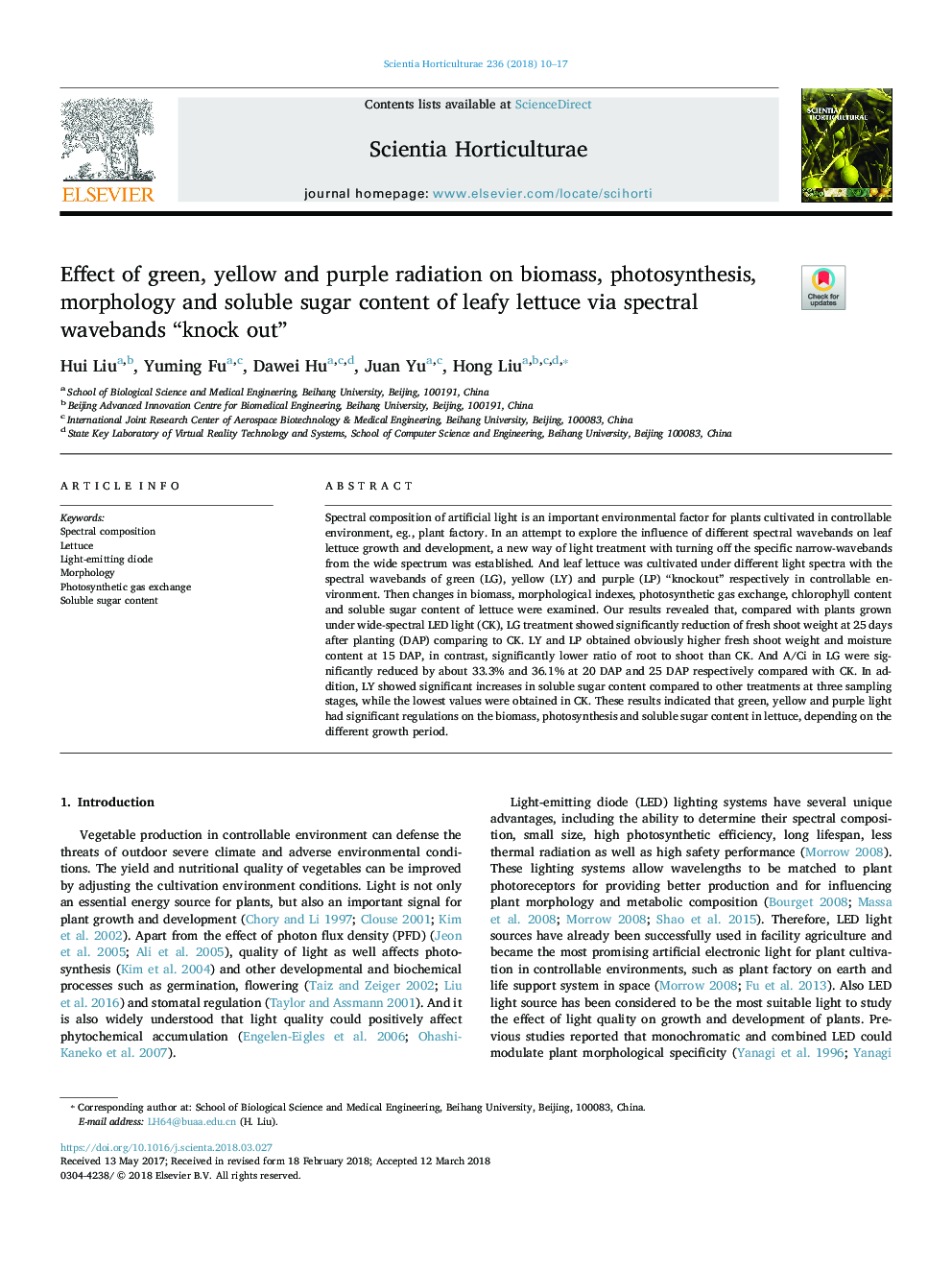| Article ID | Journal | Published Year | Pages | File Type |
|---|---|---|---|---|
| 8892601 | Scientia Horticulturae | 2018 | 8 Pages |
Abstract
Spectral composition of artificial light is an important environmental factor for plants cultivated in controllable environment, eg., plant factory. In an attempt to explore the influence of different spectral wavebands on leaf lettuce growth and development, a new way of light treatment with turning off the specific narrow-wavebands from the wide spectrum was established. And leaf lettuce was cultivated under different light spectra with the spectral wavebands of green (LG), yellow (LY) and purple (LP) “knockout” respectively in controllable environment. Then changes in biomass, morphological indexes, photosynthetic gas exchange, chlorophyll content and soluble sugar content of lettuce were examined. Our results revealed that, compared with plants grown under wide-spectral LED light (CK), LG treatment showed significantly reduction of fresh shoot weight at 25 days after planting (DAP) comparing to CK. LY and LP obtained obviously higher fresh shoot weight and moisture content at 15 DAP, in contrast, significantly lower ratio of root to shoot than CK. And A/Ci in LG were significantly reduced by about 33.3% and 36.1% at 20 DAP and 25 DAP respectively compared with CK. In addition, LY showed significant increases in soluble sugar content compared to other treatments at three sampling stages, while the lowest values were obtained in CK. These results indicated that green, yellow and purple light had significant regulations on the biomass, photosynthesis and soluble sugar content in lettuce, depending on the different growth period.
Related Topics
Life Sciences
Agricultural and Biological Sciences
Horticulture
Authors
Hui Liu, Yuming Fu, Dawei Hu, Juan Yu, Hong Liu,
